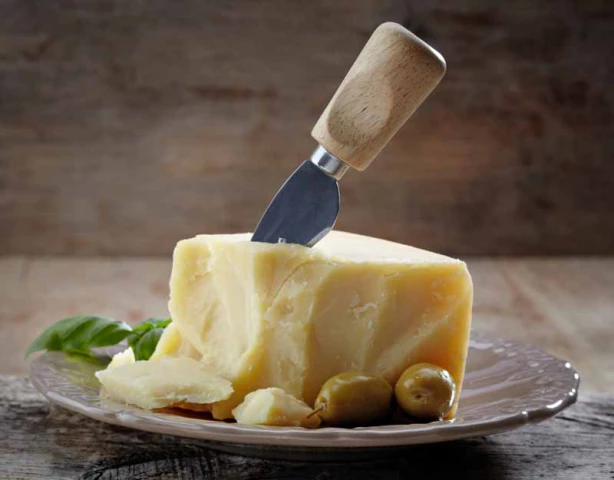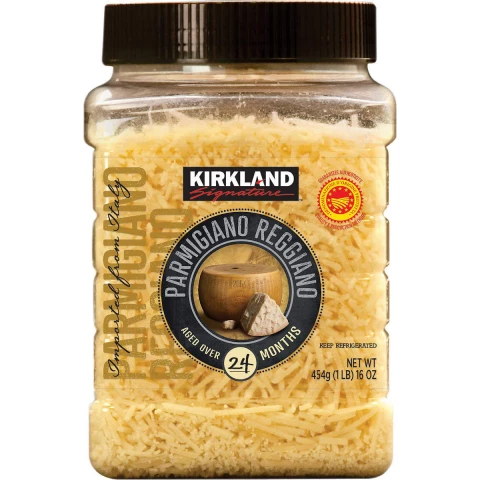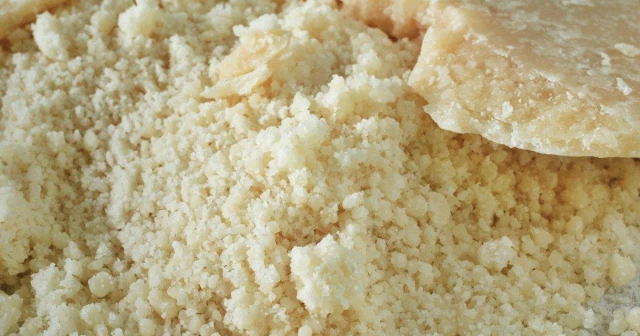Parmesan cheese is quite popular among pasta lovers. It may be a topping or a prime ingredient of several pasta dishes and casseroles. Its more robust and sharper flavor gives the food all it needs to be coming out perfect. But it doesn’t melt like other typical cheese types and sometimes causes much hassle and unexpected outcomes. And if you’ve ever tried it, you will definitely wonder does parmesan cheese melt because of its weird melting.
So, knowing all facts about your beloved cheese is essential for enjoying a delicious steaming bowl of pasta. Therefore, here we’ll discuss why parmesan doesn’t always melt well and which factors affect your cooking efforts.
So, read this interesting piece of guide till the end to know all the aspects of your cheese.
Does Parmesan Cheese Melt?
And the answer to your question is yes. Parmesan cheese melt deliciously and gives your beloved food recipe a creamy and umami flavor. Its firm cheesy texture adds creamy goodness to savory sauces, dips, and other traditional casseroles.
Parmesan melts because it contains rennet as a primary ingredient that is an animal enzyme making milk cords soften easily on heating.
Parmesan cheese goes great in stews, dips, and sauces as it gives a thicker texture to them. Moreover, it also adds extra delicious, creamy, and salty flavor notes to the recipe. So, try to add seasonings or spices after adding parmesan.
But it doesn’t always melt deliciously and easily. Because not every kind of parmesan cheese is perfect for melting efforts. So, you must know all those types that give you desired melting outcomes.
Freshly Grated Parmesan
Freshly grated parmesan is the best type for melting purposes. So, look for the bigger block of cheese labeled original Parmigiano-Reggiano.
Be sure to slice cheese manually before making your mouth-watering treat. Indeed, it’s the best way to ensure the perfect melting of parmesan.
Grating parmesan isn’t a big deal to get a creamy, cheesy food dish. However, a bigger slice of parmesan is expensive, but you can use it many times and a little cheese is enough to give your recipe umami flavor and texture.
Pre-Grated, Store-Bought Parmesan
Pre-grated or store-bought parmesan is the major cause that should be resolved first. If you are in the habit of using pre-grated parmesan rather than fresh, the chances are that you might face melting issues.
Moreover, stored parmesan is not as flavorful as fresh one and also cause poor texture by either clumping or crumbling rather than melting.
So, try to avoid such a cheese version and be selective in your cheese preferences to get an ideal savory treat.
Shredded Parmesan
Shredded parmesan is in the form of long strips or shreds that are larger than grated cheese. But it isn’t best for melting, just like pre-grated parmesan.
However, you may notice a better texture and final look of the dish than the former one. However, if you want to experience an ideal parmesan cheese melt, you must avoid either shredded or grated cheese.
Ground Parmesan
Ground parmesan may be the first choice for many chefs, but it may disappoint you from the melting point of view. As ground cheese is usually stored with a bit of cornstarch to prevent it from sticking, so it can add extra starchy flavor to food.
So, if you want to enjoy smooth parmesan cheese melting, you must use freshly sliced or grated cheese. It could be an extra hassle for you but can give you a dream recipe.
How Long Does Parmesan Cheese Take To Melt?
Well, it depends on what type of parmesan you are going to work with. As you see above, not every kind of cheese is best for melting. So, it depends.
It takes a few seconds to melt right away if you’re using quality or real cheese. However, the melting point of parmesan is slightly higher than typical cheese versions, but its melting is not as much challenging as you may think.
And if you’re working with processed or store-bought parmesan, you may likely end up clumpy or crumbly cheese. This is because such types of cheese aren’t melted by a little warmth of the food. So, it may take 8 to 10 minutes to melt slightly.
Why Parmesan Cheese Doesn’t Always Melt Wall?
It would not be wrong to say that parmesan isn’t melted ideally every time you add it to your recipe. So, what are the reasons behind the uneven melting of parmesan?
Why it doesn’t always melt, but sometimes get a weird, stringy and clumpy texture. So, let’s see how can you fix it.
Non-Stick Agents Of Cheese Prevent Melting
Uneven melting of parmesan is caused by using store-bought, low quality, and processed cheese. As you already noticed that such kinds of cheese have cornstarch or other non-stick additives in them.
Such non-sticking agents prevent cheese from sticking and clumping together. However, whenever cheese comes into contact with a bit moisture, it will start to clump. And the additives stop this from happening by providing a thick dry coating.
Although these adding agents don’t affect the flavor profile of the food but definitely affect the meltability of cheese. The same goes for stored parmesan.
So, it would be good to avoid such processed parmesan cheese versions as they can ruin the whole recipe. Therefore, always choose the right kind of cheese and also fresh one to enjoy the perfect parmesan melt.
Counterfeit Parmesan Will Be Clumpy
Counterfeit parmesan can give you the expected flavor profile with a nice texture. However, you will definitely face melting blunders whenever you add fake parmesan to your food.
Because real or high-quality parmesan melt right away when it comes in contact with the heat of the dish. And if you don’t find the smooth melting cheese cords, the chances are that your cheese isn’t real or good to use.
Fake parmesan has some acidic ingredients with an animal rennet or enzymes. Acidity provides a nice texture to the cheese, and thus it retains its characteristic shape. But the fake parmesan starts to get clumpy and stringy rather than complete melting on heating.
Therefore, it doesn’t seem to be a preference for a steaming bowl of pasta. That’s why it’s essential to be tricky to enjoy real parmesan.
Read Also: Difference Between Ricotta And Mascarpone
How Can You Melt Parmesan Without Clumping?
The only trick to get smooth parmesan melting is to use fresh or real Parmigiano-Reggiano. Go with freshly sliced cheese rather than the stored bags of pre-grated or shredded cheese.
The freshness of cheese is the key element of getting an ideal punch of cheese melting. But it isn’t always easy to buy real and fresh cheese because there’s not much difference in real or fake parmesan.
So, it would be a tiring journey of trials and errors until you find the ideal parmesan brand providing nice melting according to your texture preferences. So, be patient and try hard to achieve better results.
However, you can avoid unusual parmesan clumping by adding cheese to a reasonably hot dish. Try to stir the dish continuously after adding cheese for 5 to 8 minutes. Always use fresh and manually grated parmesan instead of ground cheese.
By the way, these are not ideally complete solutions to prevent uneven melting but they can help you a lot.
Final Words
Parmesan cheese melts deliciously when you try fresh or manually sliced parmesan. The major reasons why your parmesan cheese isn’t melt are the usage of fake, stored, and ground cheese in your recipes.
So, try to avoid fake cheese and know the real parmesan brands striving hard to give you a delicious cheesy mouthfeel with nice melting cheese cords.



